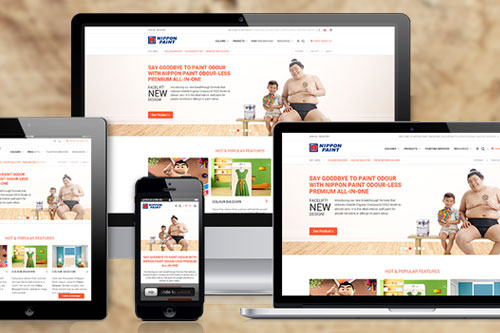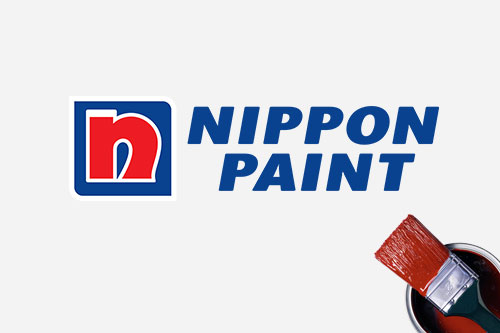
In the cluttered and highly competitive interior design and renovations market, the battle for business is constant and bloody. No ID firm can afford to rest on its laurels – not for a single minute.
In this first of a 2-part series on marketing tools for the interior design industry, we look at websites and social media – how to use them and how not to abuse them. Read and learn.
THE INTERNET IS THE MARKETPLACE

It’s no secret that the Internet has changed the way we shop – for everything, from skincare to cars to interior design firms. Wooing a customer is no longer a one-way conversation between a brand and its target market. Now it requires managing many touch-points and eavesdropping on, and where necessary intercepting, countless conversations.
The old funnel metaphor, where a consumer considered a number of brands and narrowed them down to one through a process of progressive elimination, no longer applies. In its place is a far more complex model where consumers are receiving information not only direct from the brands under consideration, but from multiple sources of input including social media posts, free-for-all forums and third-party self-styled online industry watchdogs.
FROM STICKY TO TRICKY
Sticky customers, who pledge to stick to a single brand for life, are rare. Tricky customers, who listen to everyone and everything before making up their minds, are the norm. Marketers, especially for an interior design scene, must get the fundamentals right.
A customer’s interaction with a brand doesn’t necessarily start with, but will definitely include, a visit to its website. That brings us to the obvious question – what makes an interior design firm’s website effective?
EXPERT INPUT
We spoke to Ronnie Chan, the founder of SOLD, a digital brand & marketing agency that has been working with Nippon Paint for almost a decade, and Singapore’s No. 1 Interior Design & Renovation Marketplace, HomeRenoGuru.sg.
“In this modern Internet-fuelled era, you must have a website if you want to build a successful business. But just having any run-of-the-mill website that has not been built with the business goals in mind will not work to the business’s advantage,” said Ronnie.
While it might have been possible to shun the Internet in the past, to do so now is business suicide. This is especially true for interior design firms in Singapore, as the vast majority of their customers are Internet-savvy. As consumers in general, we are becoming increasingly dependent on the Internet, for both information gathering and decision-making.
TOOL 1: HOW TO BUILD AN EFFECTIVE WEBSITE
Ronnie recommends the following key criteria for interior design firms when building their websites:
Be Using Custom Design
Be Mobile Friendly
1. Be Using Custom Design
Since ID firms are visual designers, it is logical for visitors to assume that the look of their websites reflects their work. Having a template-based, run-of-the-mill website design is a surefire way to tell your customers that your work is the same – lazy and formulaic. Having a unique, custom-designed website says ‘ditto’ about your work.
2. Be Mobile-friendly
Google, in its ‘Mobilegeddon’ update on April 2015, announced that any website that is not considered mobile-friendly by Google will receive poor website rankings in Google’s search results. And, since more than 34% web traffic in Singapore came from mobile devices in Q1 2015, according to StatCounter, it is crucial to ensure that your potential customers can view your website while on the go.
3. Be Fast-loading
In our fast-paced society, slow-loading websites are shown no mercy. This is especially true for visual-heavy websites like those of ID firms. Since an extra second can mean losing a visitor, you should assume that all your customers lack both time and patience.
4. Be Content-relevant
According to Google, it is no longer enough to use keywords or meta-tag or title-tags to achieve good Search Engine Rankings. Any effective website must also have content that is original, informative, interesting and relevant. You should consciously create high-quality content to drive traffic to your website, while building your reputation as a thought leader and trend shaper.
Be Clean and Easy-to-Navigate
Be Conversion-ready
5. Be Clean and Easy-to-navigate
If the ‘space planning’ of an ID firm’s website is poor, it is fair for a visitor to assume that the space planning of the company will follow suit. You should design your website applying the same principles as you would to a project.
6. Be Using High-quality Images
Only real, high-quality, professionally shot photos should be used on ID firms’ websites. Computer-generated 3D images should never be passed off as completed projects. Consumers will perceive the firm to be inexperienced, with no real portfolio to show, or at worst, untrustworthy. Always engage a professional photographer to ensure your company is reflected by authentic, high-quality images of your work.
7. Be Building Credibility
Build credibility and trustworthiness in every way possible. On a frequent basis, refresh your website with testimonials accompanied by real photos of the homeowner with their interior designer, and supported by project details such as house type, brief, theme and budget.
8. Be Conversion-ready
Include clear response mechanisms in your website to enable visitors to contact you easily. Place your hotline in a prominent area, and invite visitors to leave you a message in an HTML form. Build in live chat features for visitors to chat directly with you in your website.
In short, create a website that sends out the right messages about your company.
HOW SOCIAL MEDIA PAINTS A PICTURE
Once you’ve nailed a website that faithfully reflects the ethos and promises of your company, it pays to carry on the conversation through social media. In fact, many fledgling ID firms have a Facebook page before they have a website. Though this is not recommended as a long-term substitute for a website, since it could convey the message that the firm may be a fly-by-night or lacking funds, it is better than having no information at all online.
We spoke to Shelly Chan, Assistant Manager, Marketing at Nippon Paint Singapore, about how social media is helping the brand remain at the forefront of the paint industry.
TOOL 2 & 3: A SOCIAL PLATFORM FOR EVERY PURPOSE – FACEBOOK & INSTAGRAM
In line with market trends, Nippon Paint has moved a large percentage of its marketing budget to digital platforms.
“Facebook and Instagram are platforms that are more affordable to maintain and advertise on, compared to mainstream platforms such as TV and print. You can easily and almost instantly amend your promotion according to your customer segment, fast. And the ease of posting allows you to constantly and steadily build brand awareness,” said Shelly.
Each platform, Facebook and Instagram, has its own strengths.
“Facebook serves an older audience who make enquiries about products and services and connect with companies. Instagram captures a younger crowd seeking inspiration for their homes. Pictures speak a thousand words,” said Shelly.
HOW TO USE SOCIAL MEDIA EFFECTIVELY
While online ‘how-to’ articles on social media marketing are plentiful, there’s nothing like the wisdom of first-hand experience. Shelly shared these pointers for ID firms, who represent a significant percentage of Nippon Paint customers, and marketers in general.
Be prepared to spend on Facebook Advertising
Be more Emotive than Informative on Instagram
1. Be Image-heavy and Text-light
Facebook has a 20% text rule in all their image posts. If your image is full of text (treating the image as if it is a print ad), Facebook will penalise you by limiting the reach to your customers. The Facebook image displayed as an example of user newsfeed dimensions is 472x394px. Other images will never be cropped, but scaled down. So the actual ratio is 236x197px. Use this as a golden rule when it comes to creating images.
2. Be Brief and Direct
A simple and straightforward call-for-action post message works better than a long one, unless you are giving out mandatory information. Keywords should be upfront – use ‘40% Off Renovation Packages’ instead of ‘Join us at (LOCATION) on (DATE) to find out more about…’, because some users do not even click ‘Read More’.
3. Be Prepared to Spend on Facebook Advertising
If you really want to significantly extend your reach, it’s a good idea to invest some advertising dollars on Facebook. Otherwise, you will only reach out to less than 1% of your Facebook page fans at the point where your post is published. Despite the hype, that is the brutal truth. Facebook ads can be purchased online, or through a digital agency.
4. Be More Emotive Than Informative on Instagram
When posting on Instagram, remember that people usually view for leisure rather than purpose-driven shopping or information gathering. Make sure you apply filters to make your image easier on the eye. Use images that depict an enviable or aspirational lifestyle. Instagram pictures work best on 1080px by 1080px. Avoid posting too many promotional deals with lots of text. You need to give your generally younger target audience a good reason to follow your account and choose you over others.
Be Consistent Not Persistent…
Be Responsive and Sincere
5. Be Consistent Not Persistent…
… to the point of annoying. Never spam your target audience even if your promotional posts are time-sensitive. Just imagine receiving the same message repeatedly over the course of a day or two, and seeing it on your wall. It’s more likely to deter rather than attract customers.
6. Be Building Long-term Customers Not Short-term Opportunists
Never spend campaign dollars on giving away big prizes and freebies to gain short-term fans/followers. You will end up with a large base of inactive fans/followers who will never be converted into customers.
7. Be Responsive and Sincere
As you build your fan and customer base, it is inevitable that more and more people will visit your Facebook page and/or Instagram page to comment, both positively and negatively. It is important to acknowledge all of them as promptly as possible. The Internet never sleeps, and people expect you to respond swiftly.
8. Be Aligned On- and Offline
Make sure that you are connected, offline and online, as well as internally within your organisation, so that your customers receive a clear picture about your brand and what it stands for. Never be caught saying one thing offline and another online. Remember, the customer thinks of all your platforms as one – even if different teams man them.
NET YOUR CUSTOMERS
Be it through a professional, well-designed website that serves as a sampler of your firm’s clarity, creativity and ingenuity, or through well-planned social media posts – though ideally through both, reach out to your customers through the Internet.
Cyberspace is a vast ocean, and 99.9% of all your customers are already swimming in it. Use the available tools to cast a net and catch them… before your competitors do.





















